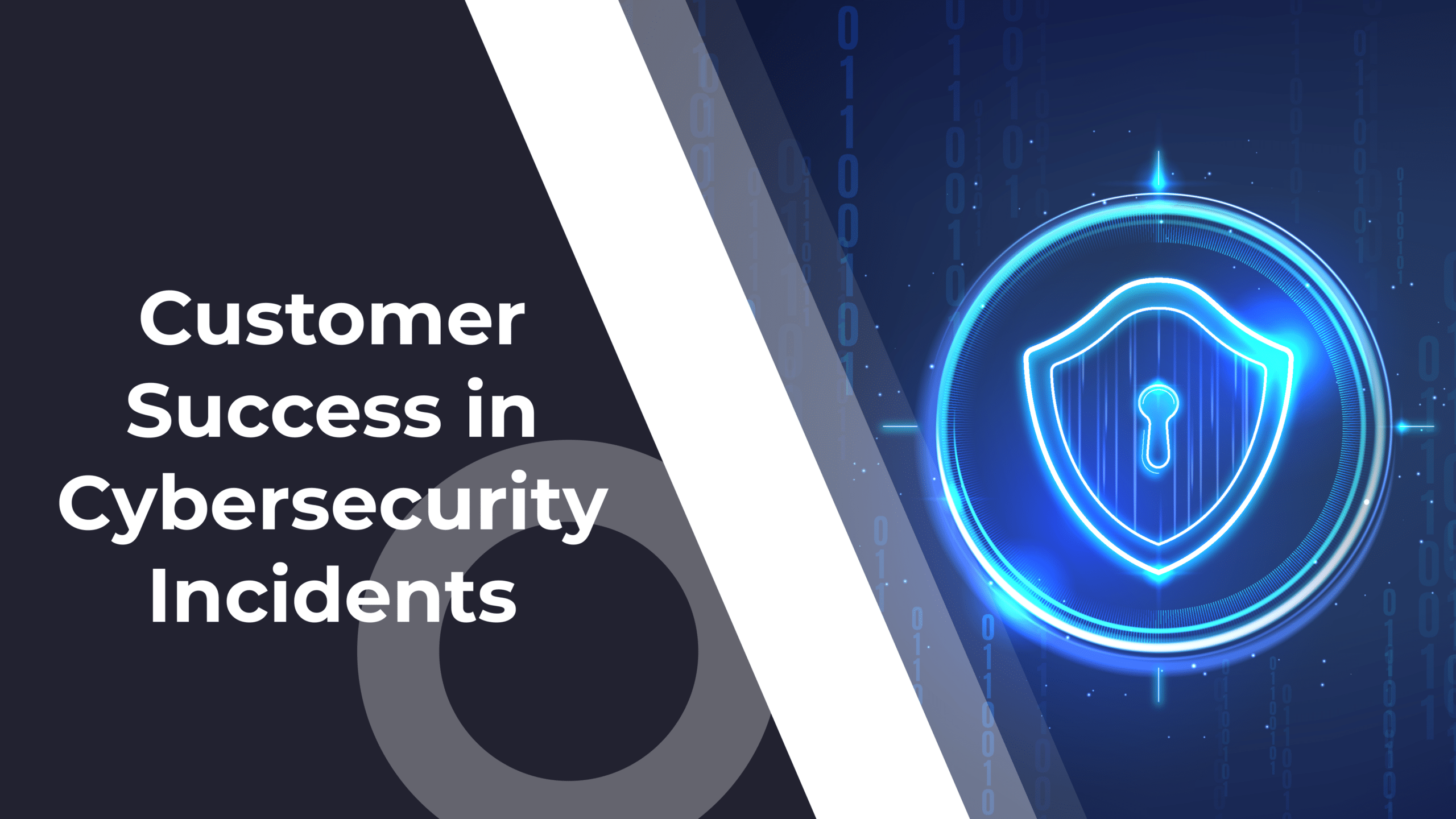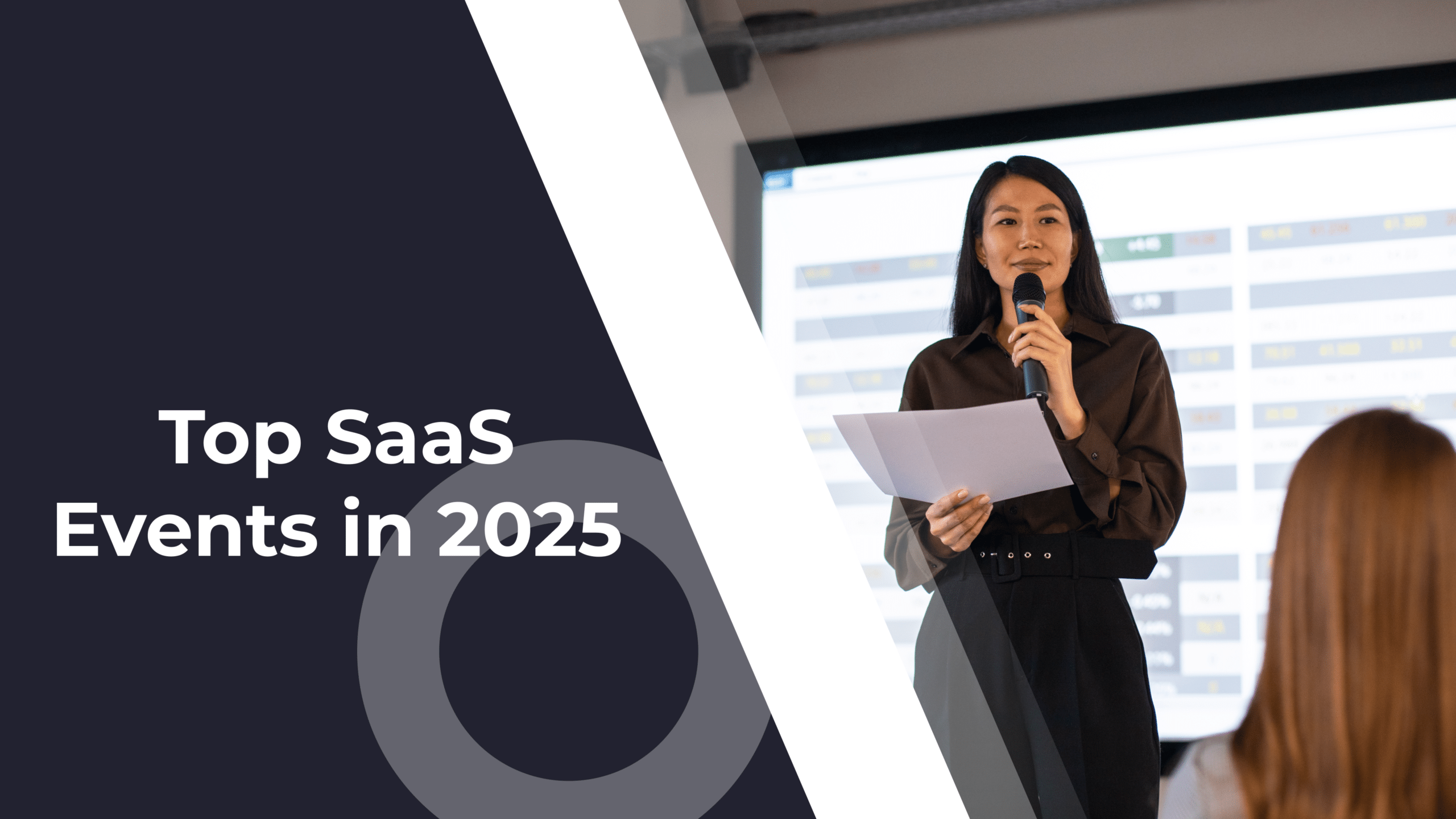“SaaS is the future of software, and that future is now.” This is one of the episode’s names for the B2B SaaS podcast series released by Deloitte and Oracle in 2021. Since that time, SaaS has already started gaining ground and thriving, as they say.
What about now, and what should you expect in the coming years?
Just look around: Zapier, Asana, Salesforce, HubSpot, and other SaaS automation tools have been changing the landscape of today’s digital universe. In fact, over 90% of organizations consider SaaS a facilitator of emerging tech adoption.
That said, explore the current SaaS trends that should be on your radar today. And let’s make some thrilling SaaS forecasts for 2024—and beyond.
The Current State of the SaaS Market
One doesn’t need to be a prophet to say that SaaS is rapidly evolving. And businesses, as well as their CS professionals, strive to keep up with the latest software-as-a-service trends and advancements in the industry. Let’s peek into the current SaaS state to help us understand and see where its market goes.
Overview
SaaS, or software-as-a-service, represents a paradigm shift in how software is delivered and used. This model has broadened the scope of customer success, transitioning from mere support to becoming integral in ensuring customer engagement and retention. Popular SaaS platforms like Salesforce, Zendesk, and Asana are not just tools; they’re ecosystems where CS strategies are tested and refined.
Despite its growth, the SaaS sector faces challenges that directly impact CS roles. Scaling customer success operations to match rapid client onboarding, ensuring high satisfaction in a saturated market, and integrating new technologies like AI for personalized customer experiences are just the tip of the iceberg.
Key statistics
The SaaS market shows no signs of stopping or even slowing down. In fact, it has been exponentially growing and expanding. The proof is in the numbers:
- The SaaS market could reach $908.21 billion by 2030 at a compound annual growth rate (CAGR) of 18.7%. (Fortune Business Insights, 2023)

Image Source: Fortune Business Insights
- SaaS expenditure will increase by 17.7%, amounting to a total of $232 billion in 2024. (Gartner, 2023)
- The revenue in the SaaS segment will hit $344 billion by 2027 with an annual growth rate of 7.89%. (Statista, 2023)
- SaaS will power 85% of all business applications by 2025 compared to 70% in 2023. (BetterCloud, 2020)
These figures indicate not just growth, but evolving expectations and opportunities for saas companies and their customer success teams. And as we bridge the gap between technological advancements and user expectations, CS professionals play a pivotal role in guiding and retaining customers.
Driving factors shaping the industry
There are many factors driving the rapid growth of the SaaS market. Take it from the same report of Fortune Business Insights:
SaaS solutions have been evolving due to rapid technological advancements. Artificial intelligence (AI) and machine learning (ML) have been integrated with SaaS technology to improve operational efficiency and develop business intelligence.
Further, many companies and organizations have started adopting cloud-based solutions since the pandemic. Most of them have been supporting this technological adoption for market growth in the future.
As we move on to the next section, “7 Trends Shaping the Future of SaaS,” it is important to consider the current market dynamics as a background for upcoming trends. Understanding these trends will enable CS professionals to anticipate changes, adapt strategies, and continue to drive success in an ever-evolving SaaS ecosystem.
7 Trends Shaping the Future of SaaS
The SaaS industry has already penetrated various businesses across different sectors. As such, it’s best to examine the most recent trends. They set the direction towards a bright and
promising future of the SaaS market.
Here are the top trends that are shaping the SaaS future:
1. Adoption of artificial intelligence (AI)
Have you noticed it, too? AI is dominating the IT market. No wonder it took root in the SaaS ground and modified it for good. And for the better.
AI has made one of the groundbreaking technological shifts in SaaS, with many companies looking to use generative AI to lead the change and transform the face of the industry.
If anything, AI can help your team. For instance, it can improve your SaaS team’s management processes. It can reduce manual task handling, create an efficient schedule, help manage workloads, foster team communication, and facilitate remote collaboration.
AI-powered tools for user experience (like chatbots and conversational AI) are the most widespread among SaaS businesses. Let’s take HubSpot, for instance. The brand uses a lead-generation chatbot (see the screenshot below).
Further, AI-assisted shopping revolutionizes the retail experience by leveraging advanced algorithms. These algorithms analyze consumer preferences and behavior, offer personalized product recommendations, and influence the buyers’ decision-making.
Jim Rainey, VP of Growth at CoPilot Search, highlights the impact of AI-assisted automotive shopping.
Rainey said, “It introduces a transformative approach to vehicle purchasing by employing advanced algorithms to analyze user preferences, budget constraints, and real-time market data. This technology streamlines the car-buying process by providing personalized recommendations, comparing prices, and offering insights on vehicle features.”
2. Personalized experiences
Improve your bottom line by putting customers at the top. This is Zendesk’s tagline in its CX Trends 2022 report. But what does this mean in practice?
- Business Performance Link: About 75% of business leaders acknowledge a direct correlation between personalized customer service and enhanced business performance. This recognition underlines the importance of tailoring experiences in the SaaS sector.
- Customer Spending Habits: Personalized experiences are not just appreciated; they’re financially rewarded. Approximately 90% of customers are willing to spend more with companies that offer bespoke experiences.
- Top Business Priority: For over half (56%) of the businesses surveyed, enhancing customer experiences is the number one priority, showcasing a shift from product-centric to customer-centric models.

Image Source: Zendesk 2022 CX Trends Report
Personalization in SaaS goes beyond addressing customers by their names in emails. It’s about creating a user experience that feels uniquely tailored to each individual’s needs and preferences. Here’s how SaaS companies are embracing this trend:
- Data-Driven Customization: Leveraging customer data to understand and predict needs, preferences, and behaviors. This approach enables SaaS companies to create user experiences that resonate on a personal level. Some of the tools best used for this are Custify, Hubspot, Segment or Uservoice.
- AI and Machine Learning: Integrating AI and ML algorithms to analyze user interactions and automatically adapt interfaces, recommendations, and support based on individual user patterns.
- Omnichannel and Multichannel Support: Offering seamless support and interaction across various channels, ensuring consistency and recognizing the customer’s journey across all touchpoints.
- Customizable Dashboards and Tools: Allowing users to tailor their dashboards and toolkits within the software, thus enhancing the sense of control and personal relevance.
- Feedback Loops: Implementing robust feedback systems that not only collect customer opinions but also act on them, thus constantly evolving the product in line with user expectations.
“As a CEO deeply immersed in the Customer Success realm, I’ve witnessed firsthand the transformative power of CSPs in personalizing customer experiences and the benefit our clients have had. CSPs aren’t just tools; they’re the gateway to understanding each customer’s unique journey. By intelligently analyzing data and user behavior, a platform like Custify can empower SaaS companies to connect with their clients on a more personal level.
The magic is in the details. It’s about recognizing and responding to individual customer needs, crafting experiences that not only meet but anticipate expectations. This level of personalization does more than just boost satisfaction; it forges lasting bonds of loyalty. In today’s competitive SaaS environment, it’s this personal touch that truly sets a service apart.”
Philipp Wolf, Founder & CEO – Custify
3. Focus on customer success
Customer success equates to business success. That’s why many companies and organizations ensure their customers or clients become successful after purchasing their products or hiring their services. This way, such success translates to customer loyalty and business profitability.
Customer success has become a buzzword in today’s business landscape, which applies to the SaaS industry. However, it’s more than just providing customers with the best experiences. It’s ensuring that customers get the most out of your SaaS products or services so that they become successful at what they do.
Over 72% of businesses claim achieving customer success is their top priority. The numbers don’t lie: The global customer success platform market is projected to reach $31 billion by 2026.
Philipp Wolf, the founder and CEO of Custify, has earlier predicted the focus on customer success as a growth channel this year. And this will continue next year and the next few years to come.
Wolf mentioned. “This involves a shift towards proactively identifying and addressing customer needs and pain points, with the goal of improving customer retention and driving revenue growth.”
4. Prevalence of technological integration
There’s no denying the rise of digital tools and technologies. And what’s great is that they can be integrated with one another, creating a digital ecosystem. Observing the modern trends in SaaS, you can’t ignore the significance of multiple API integrations often managed via a robust API gateway platform.
Puneet Gogia, Founder of Excel Champs, provides an example of how this
SaaS trend contributes to business growth in the insurance industry:
“Companies that offer insurance underwriting software can provide more flexible solutions and gain a better competitive advantage by integrating agency management systems (AMS), comparative rating systems, and carrier-driven APIs. The more third-party applications they add to their ecosystem, the more opportunities are opened up for their clients and businesses.”
Let’s take BriteCore as an example. This cloud-based platform for P&C insurers smoothly syncs with DocuSign eSignature and 30+ more apps to improve operational efficiency and enhance user experiences. Likewise, you can synchronize your tool with customer success software, CRM for SaaS sales, and other essential systems.
Multi-integration allows you to connect your software-as-a-service with different tools seamlessly. This way, you build a joined-up system that meets all the needs and requirements of your SaaS customers.
5. Enhancement of cybersecurity
Too much emphasis has been put on cybersecurity across different industries. This is because of cyberattacks that can put business security and customer privacy at risk. Improved IT security and data privacy also belong to the most significant customer experience and customer service trends, not without a good reason.
Andrew Pierce, CEO at LLC Attorney, stressed the importance of cybersecurity.
Pierce said, “Cybersecurity threats expose SaaS businesses to such risks as cloud leaks and data breaches, among others. They endanger the reputation of companies and the information of their customers. As such, cybersecurity has become paramount for SaaS to address cloud security challenges and avoid legal consequences.”
For example, Microsoft Azure’s cloud misconfiguration resulted in the data exposure of 65,000 companies and 548,000 users.
If you run a SaaS company, make a cybersecurity checklist and implement preventative measures to keep your software cyber-safe. A key component of these preventative measures should be regular cloud risk assessment, which involves identifying, analyzing, and mitigating potential security threats within your cloud infrastructure. One of the surefire ways to do that is to invest in secure cloud hosting solutions. You can pick your preferred SaaS hosting provider to build, deploy, and scale your SaaS business in a highly protected manner. You can also consider implementing a Cloud-Native Application Protection Platform (CNAPP) to enhance security and compliance across your cloud-native applications.
Insider attacks are also becoming more and more important, increasing concern for enterprises across industries. These dangers originate from persons within an organization who have authorized access to sensitive data and systems but utilize it for personal benefit or to do harm. To address this issue, many firms are turning to threat management software, which identifies, detects, and mitigates insider threats before they cause major damage.
6. Development of white label SaaS
Another emerging trend in SaaS is white-label development. White-label SaaS is an unbranded software-as-a-service product that anyone can purchase for rebranding, repricing, and reselling to others later.
Jesse Galanis, Content Marketer at Furm, enumerates several valuable benefits of buying white-label SaaS:
“In the case of white-labeling, creators have no trademarks over their developed SaaS tools when the deal is made. This makes it one of the simplest ways to storm into the market at breakneck speed with a ready-made SaaS solution. In addition, a white-label model is about cost-efficiency as you don’t have to spend money on development, testing, trademark registration, etc.”
Besides, McKinsey proves that the creation of in-house software can run 66% over budget and 33% over time and deliver 17% less value than expected. That’s when purchasing a customizable SaaS tool and reselling it later can be a wise decision.
If you consider white-label reselling, scroll through the following “unbadged” SaaS tools worth your attention:
- WotNot (chatbot platform)
- ChainUP (crypto exchange software)
- DeOnDe (food ordering and delivery solution)
- SuiteDash (client portal – one of the best customer self-service solutions)
- Mautic (automated marketing solution)
- Simvoly (website builder)
- Bookafy (appointment booking software)
Alternatively, you can white label your existing SaaS product and sell or lease it to endless clients from a diverse set of market channels.
7. Push for environmental, social, and governance (ESG) initiatives
SaaS-tainability. It may seem that cloud computing adopted by SaaS is, per se, a panacea against the heavy ecological footprint of technologies. However, it doesn’t mean that SaaS brands have zero influence on the environment.
Enter ESG, which is short for environmental, social, and governance.
ESG is not solely confined to business sustainability for environmental protection. It also involves executing corporate social responsibility (CSR) and good governance to improve people’s lives and uplift society in general. Companies and organizations should implement best practices that align with the ESG initiatives
Cath Brands, Chief Marketing Officer at Flintfox, promotes ESG in the SaaS industry.
Brands said, “Even though software-as-a-service is by default a sustainable solution, SaaS companies put their best foot forward to go even greener and spur others to do the same. Azzera CELESTE is a good SaaS example of promoting sustainability. It’s a first-of-a-kind SaaS solution for aircraft operators to cut emissions in aviation.”
It’s also worth knowing that 44% of consumers are more likely to purchase a service or product from a brand if it has a clear commitment to sustainability.
Sustainability must become a part of your corporate culture. Focus on sustainable IT practices and eco-friendly technologies that help protect the environment. These practices include switching to renewable energy sources, building a remote team, reducing e-waste, investing in energy-efficient hardware, and collaborating with eco-conscious partners.
Salesforce, for instance, has a climate action plan with six sustainability priorities. The company goes with the slogan: At Salesforce, we consider the planet a key stakeholder. As of today, it uses 100% renewable energy for business operations and can boast net zero residual emissions.

5 SaaS Predictions for 2024 and Beyond
Earlier, we discussed the top trends shaping the future of SaaS. Now, it’s time to make fearless forecasts based on the current trends.
What can we expect in the SaaS industry next year and beyond? That said, here are five predictions you should look forward to:
1. Increased Adoption of Vertical SaaS
In recent years, we’ve seen different industries penetrating vertical markets. Business verticals are narrow niche markets where companies create specialized services to meet specific and unique customer needs.
For the SaaS industry, the adoption of vertical SaaS has only just begun. Think of Veeva, Procore, and Toast as examples of SaaS companies that have recently emerged. In Veeva’s instance, they offer cloud-based solutions for the pharmaceutical industry, which streamline drug development and clinical trials.
In the coming years, expect the growing adoption of vertical SaaS. Consider digital tools and software apps specifically catered to stakeholders for business communication, project management, customer relationship management, accounting and bookkeeping, and other purposes.

Source: State of Vertical SaaS Report
At the end of 2022, Fractal Software stated this about vertical-SaaS as an industry:
Since January 2020, the total market cap of the Vertical SaaS Index has grown by 30% and Fractal’s vertical SaaS index remains above its pre-pandemic highs. Over the past 2 years, the total LTM revenue of the companies in the index has doubled from $14.9B to $29.5B.
2. Growth of Low and No-Code Platforms
Website and software development has gone far and wide, but it has continuously evolved. What started as traditional programming has led to a no or low-code development approach.
This coding approach has become a game-changer in the SaaS industry. For the uninitiated, low-code development involves using UI templates and pre-build components for the app development process. Some of the best low-code platforms in the industry are Appsmith, Retool, Microsoft Power Apps, Mendix, and Outsystems. These platforms offer robust tools for streamlining development and enhancing overall productivity. Meanwhile, the no-code development requires no coding at all, as the name would imply.
As an example, workflow automation platforms like Zapier, allow users to automate workflows without any coding knowledge.

The traditional programming approach might become outdated in just a matter of years. And the no/low code development could become prevalent in the SaaS industry. In fact, these platforms will account for nearly 65% of all app development by 2024. What will happen in the next few years?
3. Rise of Voice and Conversational User Interfaces (UI)
Imagine doing business with customers in real time via digital platforms, whether audio or video. This is already happening due to SaaS platforms with voice and conversational UIs.
For those who may or may not be aware, voice and conversational UI utilizes natural language processing (NLP) and voice recognition technologies. They allow users to interact with computer devices and software programs using spoken language.
For an example of this, look at all the SaaS products integrating Amazon Alexa or Google Assistant for hands-free operations, like Sonos, Samsung or OpenAI.

In the next few years, expect voice and conversational UIs to be more widespread across industries and organizations using SaaS platforms. They will offer a handful of benefits, from improved UX to increased efficiency and productivity to more accessibility.
4. Rapid Growth of Micro-SaaS
Have you heard of Micro-SaaS? It’s exactly what it sounds like—a micro version of a regular SaaS. It’s known for its low barrier to entry, focus on niche markets, agility and flexibility, as well as specialization and expertise.
Micro-SaaS is a high-level software built deliberately for small businesses. Think of it as the equivalent of a mom-and-pop store on the corner. This type of platform lets you focus on a small niche instead of targeting a large market.
For examples of micro-SaaS platforms, consider an on-demand, virtual 1:1 mock interview platform, specifically helping jobseekers with interview preparation, as opposed to a broader career development tool. Another example is a platform specifically for freelance writers to manage projects and client relationships, as opposed to more general project management software.

In the next few years, many small businesses will use these platforms to serve small pockets of customers with specific needs. It’s safe to say that it’s the future of lifestyle software businesses.
5. Increased legal and regulatory compliance
Technology is ever-evolving, and so is the business landscape. As such, key industry players try their best to regulate businesses by setting relevant laws and regulations in place.
The SaaS industry is no exception. Currently, there might be some inconsistencies in the legal and regulatory framework governing the industry. However, expect an increase in compliance among SaaS companies for business and consumer protection.
For example, GDPR compliance in European markets impacts global SaaS providers. The same for Health Insurance Portability and Accountability Act (HIPAA) Privacy Rule in the US.
Running a SaaS business is an expensive endeavor on its own. Legal fees and regulatory compliance costs are quickly emerging as particularly substantial financial burdens. Startups can expect to pay from $5,000 to $20,000 per year. According to the Blissfully 2019 SaaS trends report, larger companies faced an average yearly cost of $177,873 for regulatory compliance.
Most likely, the focus will be on data privacy, network security, contractual obligations, government interventions, ethical considerations as well as industry-specific regulations. Stakeholders in the SaaS industry must come in prepared and ready for full compliance, lest they face legal and financial consequences.
Preparing for the Future: Tips for SaaS Companies
The future of the SaaS market indeed looks bright and promising. Given its market growth, you must capitalize on it to thrive and succeed in your business. However, you should prepare for what lies ahead.
Start by understanding the current SaaS trends and aligning your strategies with the abovementioned predictions. That said, here are some actionable tips for SaaS businesses to stay ahead of the curve:
- Stay flexible, agile, and adaptable. This means aligning your SaaS products, strategies, and services with the current and future industry trends mentioned above.
- Invest in digital tools and technologies. Sure, consider leveraging automation, cloud computing evolutions, as well as AI and ML as early as now. However, set your eyes on the future technologies on the horizons and innovate your SaaS technology to keep up with the latest trends.
- Foster a customer-centric culture. Understand that your business exists to serve customers or B2B clients needing SaaS products and services. As mentioned, focus on customer success and offer personalized experiences.
- Prioritize privacy, security, and compliance. The digital business landscape has paved the way for data privacy and network security issues. Therefore, enhance your cybersecurity to stay on top of legal and regulatory compliance. Tools like security service edge can help secure access to SaaS applications. But it’s essential to also improve your cybersecurity to meet legal and regulatory requirements.
- Focus on business sustainability. “SaaS-tainability” has become a buzzword in the industry. Start implementing ESG initiatives with best sustainable practices for your business to survive and thrive in the long run.
Conclusion
The SaaS industry is on a trajectory of remarkable growth, brimming with potential for both established and emerging companies. Currently fueled by key trends like AI integration, a strong emphasis on customer success, and personalized experiences, the industry is also seeing significant advancements in technology and cybersecurity, alongside a rise in white label solutions and ESG initiatives.
As we look to the future, trends like Vertical SaaS, low/no-code development, voice and conversational UIs, predictive analytics, and Micro-SaaS are set to shape the industry. Another critical area gaining attention is regulatory compliance. This dynamic and ever-evolving digital era offers a prime opportunity for SaaS businesses to embrace innovation and improvement, emphasizing the fact that the future is unfolding right now.





